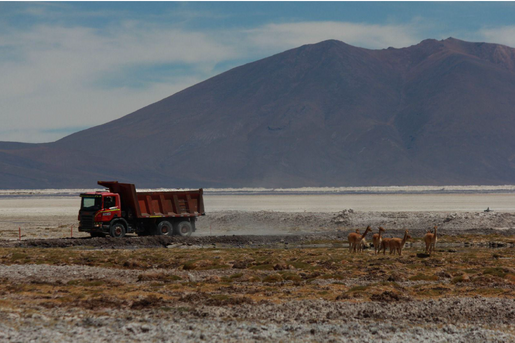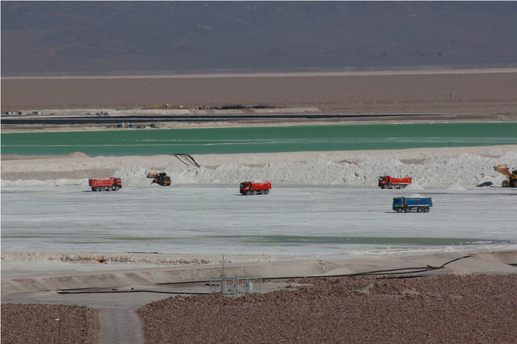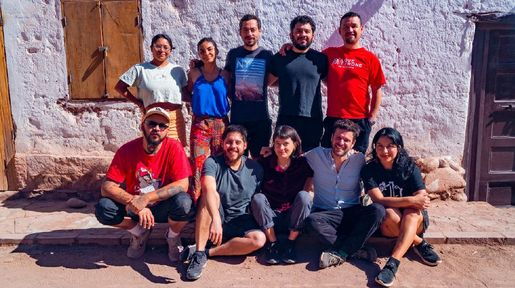For the protection of Andean Wetlands
Andean wetlands are very fragile ecosystems that provide fundamental benefits and ecosystem services for all life on earth. Through a complex hydrological process, they purify and accumulate important reserves of fresh water and food, helping to protect water reserves in extreme environments, facilitation the development of specialised life forms. They preserve a high level of endemism with globally-unique species of flora, fauna and microbiota. At the same time, they are a very important source of carbon sequestration, which contributes to mitigating the effects of the climate crisis.
These ecosystems are not only fundamental for the development of biodiversity of great importance, but also for human groups that live nearby. The salt flats, plains and wetlands systems have been essential for the establishment of human communities in the highlands of the Andes. This is reflected in traditional practices and customs, such as transhumance livestock farming, agropastoral practices and community water management as fundamental activities carried out in one of the most arid environments in the world.
These ecosystems are highly fragile, and changes to them have irreparable consequences. Various circumstances can deteriorate Andean wetlands, including the effects of the climate crisis, such as changes in water cycles, extreme drought, hot and cold periods, among others.
In the last decade, lithium has aroused special interest in international circles due to its connection with the transformation of global energy production and the climate change policies endorsed in the Paris Agreement and the Sustainable Development Goals of the 2030 Agenda.
The dramatic increase in demand for this mineral, as an ingredient for key 'green' energy production, has launched an accelerated process of extraction and production at a global level with the installation of large mining projects in salt flats, lakes and Andean lagoons. This has been accompanied by an expansion of the extractive frontier towards new territories, exacerbating existing conflicts or producing new tensions among actors involved in the process, and adding serious threats to this fragile territory due to the extraction carried out by governments and national and transnational companies.
Whilst lithium is found in many parts of the world, in the Salar de Atacama basin there is an extensive cross-border region that the extractive industry has branded 'the Lithium Triangle', due to the abundance of the mineral. The brines located in Chile, Argentina and Bolivia, in addition to their ecological characteristics, have scarce and outdated regulatory frameworks that allow extraction at a low production cost but at a very high social, cultural and environmental cost.
The unsustainable evaporative extraction methods used for brine by-products, such as lithium, have not changed substantially in recent years, which has raised significant concerns in various sectors, among other things, due to excessive extraction of water from the layers of the salt flat. Despite this, extractive companies insist that their operations have no impact on the hydrological system of the basin.
In this context, the Alliance for Andean Wetlands (Alianza por los Humedales Andinos) was born, with the objective of protecting and conserving these vital ecosystems of unique biodiversity and essential value for the people and communities that inhabit them. Civil society organizations, local communities and socio-environmental movements from Argentina, Bolivia and Chile are united under this alliance. The project was launched on November 21 and the work has been carried out continuously and systematically to protect these important ecosystems that are threatened in the face of the international objective of the energy transition, under the same extractivist logic.
In Chile, the alliance is made up of the Fundación Tantí, ONG Defensa Ambiental, ONG FIMA and the Proyecto Educativo Formando Rutas. The work, in the Chilean case, has been deployed in the Atacama and Antofagasta Region, based on understanding these ecosystems as a refuge for unique biodiversity and water reserves. The project's approach is based on respect for regional ways of life, culture and economies. Additionally, it seeks to promote and defend access to environmental justice in a context of transition to “clean energy.” This is done through territorial dialogue, pedagogical, legal, research, communication and advocacy strategies, with a community perspective.
For the protection, conservation and defense of Andean wetlands, we seek to promote long-term sustainable alternatives, prioritise water management with justice for local communities, as well as support them in the care of these ecosystems and in the search and construction of alternatives to mining.
Likewise, there is a strong commitment to inform and raise awareness at an international level about the importance of Andean wetlands, along with the risks they face due to the climate crisis and mining extraction in the context of the energy transition.
However, to promote effective protection of wetlands, it is necessary to investigate the governance processes, knowing the mechanisms of articulation between public, private and civil society actors; their desires, powers and types of relationship.
To achieve this, the Alliance for Andean Wetlands has assumed a strong commitment to make visible the importance of local and indigenous communities as key drivers in the transition towards a fair coexistence with nature and the protection of Andean ecosystems and for respect for regional ways of life, culture and economies, recognising their autonomy and avoiding paternalistic attitudes that reproduce colonial dynamics typical of the extractivist model that has historically operated in this region and that has deeply affected and damaged the social fabric; impacts that its peoples face through resistance to this day.
Images and text by Javiera Pérez Santos/Alianza de Humedales Andinos Chile
Disclaimer
Opinions expressed in posts featured on any Crossroads or other blogs and in related comments are those of the authors and do not necessarily reflect the opinions of IUCN or a consensus of its Member organisations.
IUCN moderates comments and reserves the right to remove posts that are deemed inappropriate, commercial in nature or unrelated to blog posts.



